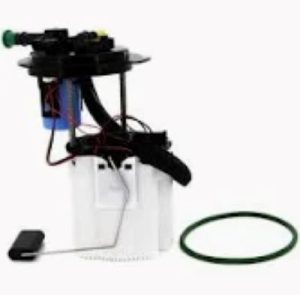Long drives as it puts the components under great demand for long durations is where a Fuel Pump fails often. So, a pump that is expected to provide delivery at the same pressure (usually between 40 and 60 psi) for hours on end—its motor and internals are going through a lot of abuse.
Why do Fuel Pumps Fail on Long Trips?
Overheating
Failure can most commonly be attributed to overheating. The fuel pump operations and in fact heavily relies on the surrounding fuel to cool its internal components. The pump is subject to overheating in cases of long runs, especially when the fuel tank is on low capacity while the weather is hot which causes quick wear of pump. According to ASME, driving with less than a quarter tank of gas raises the risk of overheating the pump by 30 percent.
Increased Electrical Strain
The pump’s motor has to keep running at high speeds for long durations of time. This can lead to electrical fatigue on its wiring or connector. According to a study conducted by the National Highway Traffic Safety Administration, 40 percent of fuel pump failures are electrical in nature—that is, until this type of failure becomes more pronounced with extended use.
Fuel Contamination
It is also a matter of dirty fuel or sediment build-up. If you only use it for the short runs then a long trip can bring debris up into your tank soaking which will clog the fuel pump or filter, restricting fuel flow. Mechanics often discover plugged filters in cars that have gone 500 or more miles on the highway without a change, putting even greater burden on the pump.

Vapor Lock
Vapor lock is an issue in hotter areas. This happens if the fuel changes phases to vapor before it reaches the engine, causing the pump to run less than efficiently (which increases its risk of failure) Such vehicles are especially prone in those states where summer heat frequently tops 100°F (38°C), such as Arizona and Nevada.
Practical examples and case studies & preventative measures
One reported case in 2021 saw thousands of vehicles across California suffering fuel pump failures during a heat spell. Mechanics found that numerous pumps were failing due to a combination of low fuel levels and long periods of driving in excessive heat, resulting in the complete shutdown of the engine.
To avoid all of that, never let your fuel tank go lower than 25%, and use high-quality fuel. The average fuel filter should be replaced between 15,000 to 30,000 miles on a regular basis to prevent failures related to debris. For long haulers, if you are putting in such incessant miles a reliable replacement like Kemso Fuel Pumps necessitates longevity and smooth fuel delivery without missing a beat while running continuously.
Check out Fuel Pump for quick and reliable ticket options. High-quality parts and proper maintenance can prevent the constant chance that something will fail over long drives, ensuring safety and consistency.